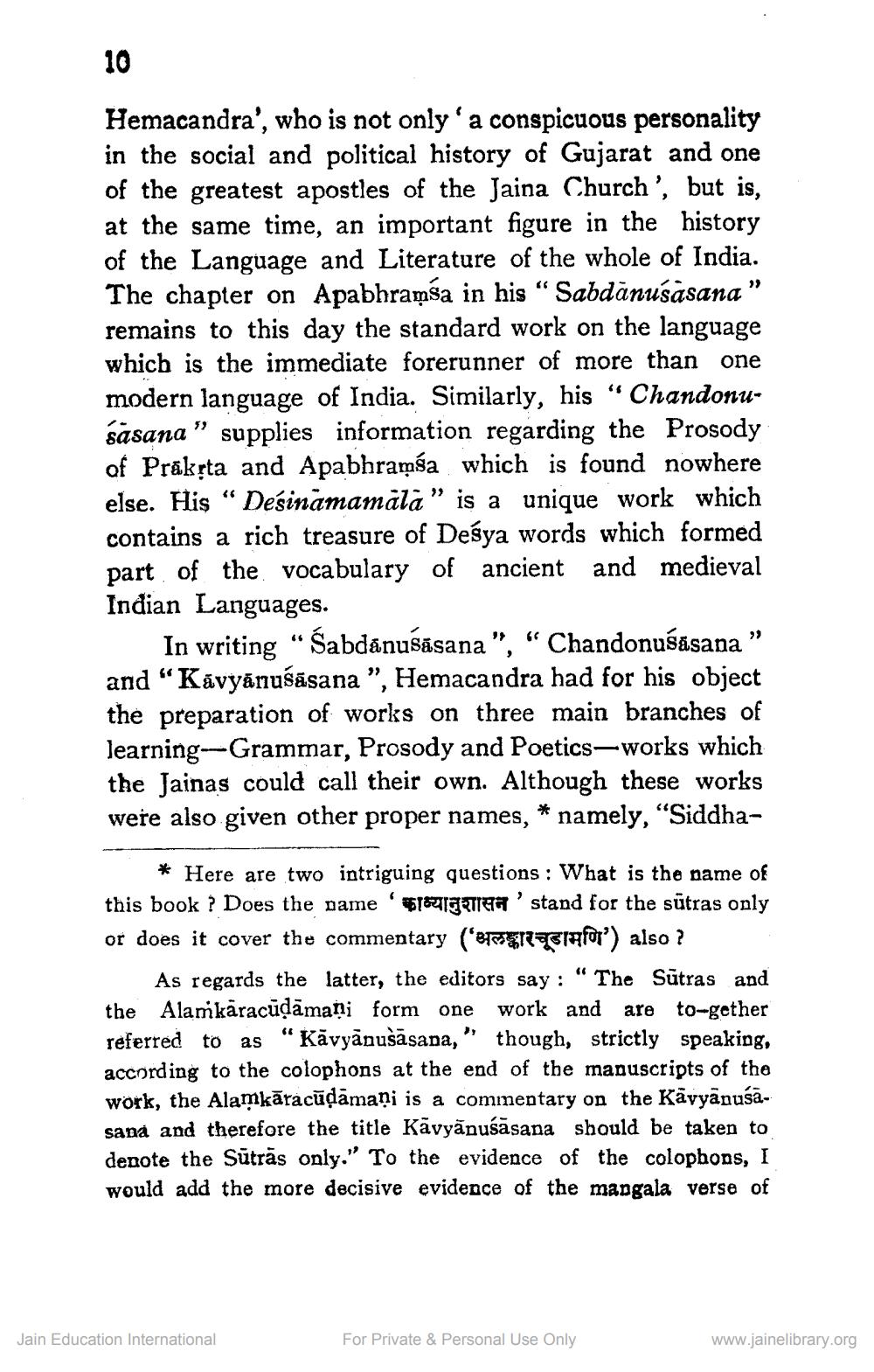________________
Hemacandra', who is not only a conspicuous personality in the social and political history of Gujarat and one of the greatest apostles of the Jaina Church', but is, at the same time, an important figure in the history of the Language and Literature of the whole of India. The chapter on Apabhramsa in his “Sabdānusāsana" remains to this day the standard work on the language which is the immediate forerunner of more than one modern language of India. Similarly, his “Chandonusāsana" supplies information regarding the Prosody of Prākṣta and Apabhramśa which is found nowhere else. His “Dešinamamālā" is a unique work which contains a rich treasure of Desya words which formed part of the vocabulary of ancient and medieval Indian Languages.
In writing “Šabdanušāsana", "Chandonuśasana” and "Kávyānušāsana ", Hemacandra had for his object the preparation of works on three main branches of learning--Grammar, Prosody and Poetics-works which the Jainas could call their own. Although these works were also given other proper names, * namely, “Siddha
* Here are two intriguing questions : What is the name of this book ? Does the name '$1@[CRIAR 'stand for the sūtras only or does it cover the commentary B e lafor) also ?
As regards the latter, the editors say: "The Sūtras and the Alamkāracūdāmaņi form one work and are to-gether referred to as "Kāvyānušāsana," though, strictly speaking, according to the colophons at the end of the manuscripts of the work, the Alamkāracūņāmaņi is a commentary on the Kävyānuśā. sana and therefore the title Kāvyānuśāsana should be taken to denote the Sūtrās only." To the evidence of the colophons, I would add the more decisive evidence of the mangala verse of
Jain Education International
For Private & Personal Use Only
www.jainelibrary.org




